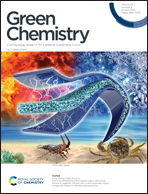A strategy to increase rebaudioside A content based on one-step bioconversion of Stevia extract to steviol†
Abstract
Steviol glycosides are natural sweeteners extracted from Stevia rebaudiana that have been applied in food for many years. However, the considerable content of stevioside and small amounts of rubusoside, rebaudioside B and rebaudioside C in Stevia extract lead to a significant bitter aftertaste. Rebaudioside A (RA) tastes sweet with no unpleasant aftertaste, so the taste of steviol glycosides can be improved by removing the steviol glycosides other than RA. Traditionally, macroporous resin adsorption, hydrophilic chromatography, and crystallization have been applied to separate RA from Stevia extract, which causes the use of large amounts of organic solvent. In this study, we co-expressed multiple β-glucosidases (SPBGL1, SBGL, SBGL2 and SBGL3) and an α-L-rhamnosidase (SPRHA2) in Escherichia coli and used cell extracts or whole cells, aiming to hydrolyze the components of Stevia extract other than RA. When crude enzyme extract of strain E5 or whole-cell catalysis by strain E5 was used in hydrolysis of Stevia extract, the content of RA increased from 24% to 71.4% and 83.4%, respectively. The final product of hydrolysis, steviol is sparingly soluble in water and can therefore be removed readily by centrifugation. This enzymatic technology allows RA preparation with no consumption of organic solvents, which provides a green way to improve the taste of Stevia extract.



 Please wait while we load your content...
Please wait while we load your content...